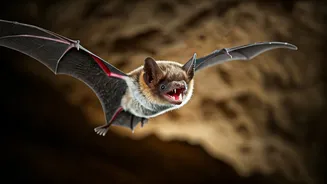The Monarch's Journey
The monarch butterfly is renowned for its incredible journey, a multi-generational migration that spans thousands of miles. Each fall, millions of monarchs
from eastern North America embark on a perilous voyage to overwintering sites in the oyamel fir forests of central Mexico. These butterflies, the final generation of the year, can live up to eight months. They gather in massive clusters on the trees, conserving energy during the colder months. When spring arrives, they begin their northward journey, laying eggs on milkweed plants as they go. This starts the cycle again, with successive generations completing the full migration. The Western monarch population migrates to the California coast for the winter, with similar patterns, though facing challenges from habitat loss and climate change.
Milkweed's Vital Role
Milkweed plays a critical role in the monarch butterfly's life cycle. It is the only plant that monarch caterpillars can feed on. As the monarch population declined, the loss of milkweed, particularly in the United States, has been a significant issue. The widespread use of herbicides in agriculture has destroyed milkweed habitats. Conversion of prairies and grasslands to farmland has further reduced milkweed availability. Recognizing the importance of milkweed, conservation efforts involve planting milkweed in gardens, along roadsides, and in other open spaces. The goal is to provide enough food for the caterpillars and help the monarch butterflies thrive. Supporting these initiatives can directly contribute to the recovery of monarch populations.
Threats to Monarchs
Besides habitat loss, monarch butterflies encounter various threats during their migration and at their overwintering sites. Climate change poses a considerable risk, with extreme weather events, such as droughts and storms, disrupting their migration patterns and impacting their survival. Overwintering sites in Mexico are vulnerable to deforestation and logging. Habitat degradation in California is likewise detrimental to Western Monarch populations. The butterflies' reliance on specific habitats and resources makes them susceptible to even minor changes in their environment. Climate change and deforestation require consistent and urgent measures to ensure the species' survival. Addressing these threats involves implementing measures to reduce deforestation, promoting sustainable forestry practices, and creating protected areas for the butterflies.
Conservation Efforts
Numerous conservation efforts are underway to protect monarch butterflies and their habitats. These include habitat restoration projects, where milkweed and other nectar-producing plants are planted to create more favorable conditions for the butterflies. Community-based initiatives encourage people to plant milkweed in their gardens and create monarch-friendly habitats. Citizen science programs help monitor monarch populations and track their migration. Collaboration among scientists, conservationists, government agencies, and individuals is essential for the success of these initiatives. The goal is to protect the overwintering sites in Mexico and California, and ensure that the migratory routes and breeding grounds are conserved. Awareness and action from the public and the collaboration between several organizations can help increase the chance of monarch butterflies thriving for generations to come.
What You Can Do
Everyone can contribute to monarch butterfly conservation. Planting milkweed and nectar-producing flowers in your gardens or on your balconies is an excellent first step. Learning about the monarch's life cycle and migration patterns can increase your appreciation for the species and encourage you to take further action. Supporting conservation organizations working on monarch conservation is another way to contribute. Reducing your use of pesticides and herbicides in your gardens and promoting environmentally friendly practices is also helpful. By taking these actions, you can join the effort to protect monarch butterflies and ensure their survival. This is a chance to show your appreciation and make a positive impact.













